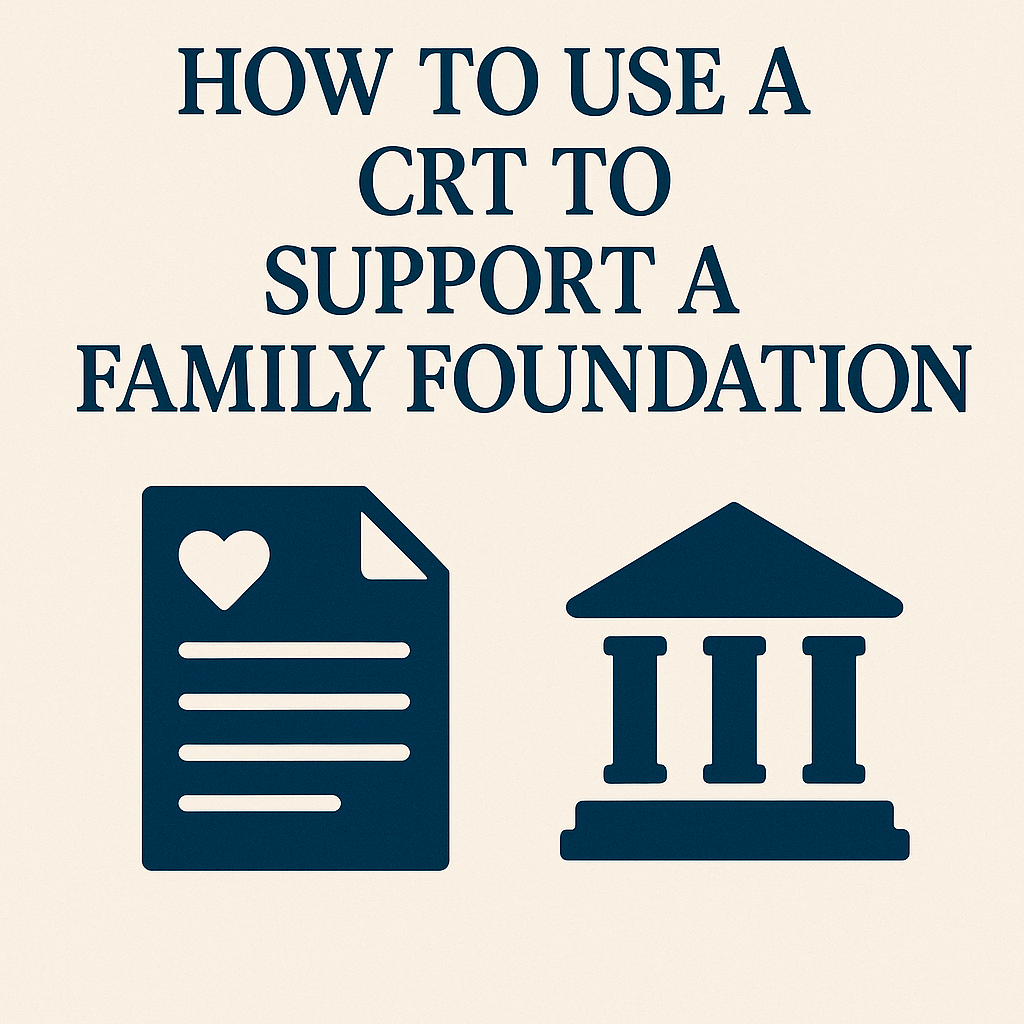Charitable Remainder Trusts (CRTs) and family foundations are two of the most powerful tools in long-term philanthropy. On their own, each brings unique benefits. But together, they create a highly strategic way to provide lifetime income, reduce taxes, and ensure your family stays engaged in giving for generations to come.
If you’re looking to turn appreciated assets into both purpose and a plan, this combination is worth a close look.
What Is a Family Foundation?
A family foundation is a private foundation that allows you and your family to manage charitable giving through a single entity. You set the mission, control the grants, and keep your name (and values) involved for decades.
It’s especially useful for:
-
Families with a strong desire to shape their philanthropic legacy
-
Donors who want to be more hands-on with their giving
-
Multi-generational families who want to teach stewardship and leadership through philanthropy
Family foundations typically require at least $1 million in initial funding to justify legal and administrative costs, though some start with less through donor advised fund hybrids.
How a CRT Fits Into That Picture
Here’s the simple version: You can name your family foundation as the charitable remainder beneficiary of your CRT. During your lifetime (or over a set term), the trust pays income to you or someone you name. When that period ends, the remaining funds go into your foundation — not directly to a public charity.
That creates a clean transition from personal financial benefit to long-term family impact.
Here’s How It Works
-
You fund a Charitable Remainder Trust
You can donate appreciated assets such as stock, real estate, or crypto into the trust. You’ll receive a partial income tax deduction and avoid immediate capital gains tax. -
You receive income from the CRT
The trust pays you or a beneficiary annual income for life or a term of years, depending on the type of CRT you set up. -
The remainder goes to your family foundation
At the end of the trust term, the remaining assets pass directly into your foundation, where your family can begin or continue managing grantmaking over time.
Why This Strategy Works So Well
It balances current and future goals
You don’t have to choose between income now and impact later. The CRT gives you both.
It avoids big tax hits
Appreciated assets can be moved into the trust without triggering capital gains, and you get a deduction upfront. The longer the trust lasts, the more you reduce your estate.
It creates a pipeline of funding
Many families struggle with how to endow their foundation over time. CRTs can be used as part of a plan to gradually fund the foundation while maintaining financial stability.
It builds family engagement
When the CRT ends, your family steps in to guide the foundation. It’s a natural handoff from one generation to the next.
Best Assets to Use
Some of the best assets to fund this structure include:
-
Stock with a low cost basis
-
Real estate that has appreciated in value
-
Privately held business interests (if timed before sale)
-
Other non-cash assets with significant gains
These assets are often poor candidates for liquidation due to taxes but work beautifully inside a trust.
Things to Watch Out For
Administrative complexity
Both CRTs and family foundations require setup, filings, and careful management. You’ll need a good team — lawyer, tax advisor, and possibly a trustee or foundation administrator.
Funding levels matter
If your CRT is too small, the remainder might not be enough to justify a full foundation. In that case, consider using a donor advised fund with your family as advisors.
Asset timing is critical
Don’t wait until an asset is under contract or about to sell. You must contribute it while the value is still unrealized or you risk losing the tax benefits.
Example in Practice
Imagine you have $3 million in appreciated real estate and want income during retirement, but also plan to fund a family foundation for education access. You set up a CRT, place the property into the trust, and receive income for 20 years. After the term ends, the remaining $1.8 million funds your family foundation — which your children now manage, continuing your vision.
This kind of structure can create real continuity between financial planning and family legacy.
Final Thoughts
Pairing a Charitable Remainder Trust with a family foundation offers one of the most elegant solutions in planned giving. It gives you the financial flexibility you need today while setting up your family to steward your values for decades.
If you’re serious about legacy, this is how you go from intent to infrastructure.
Key Takeaways
-
CRTs can be structured to send remaining funds to a family foundation at the end of their term.
-
You’ll receive income and tax benefits now, while funding your legacy for the future.
-
This strategy helps pass down not just money, but philanthropic values and family leadership.
-
Best used with appreciated assets like real estate or stock, before a sale takes place.
-
Professional setup is required, but the long-term impact can be deeply meaningful.
If you have feedback, questions, or ideas for future articles or Information Hubs, please contact us. Your insights help us create valuable content.


